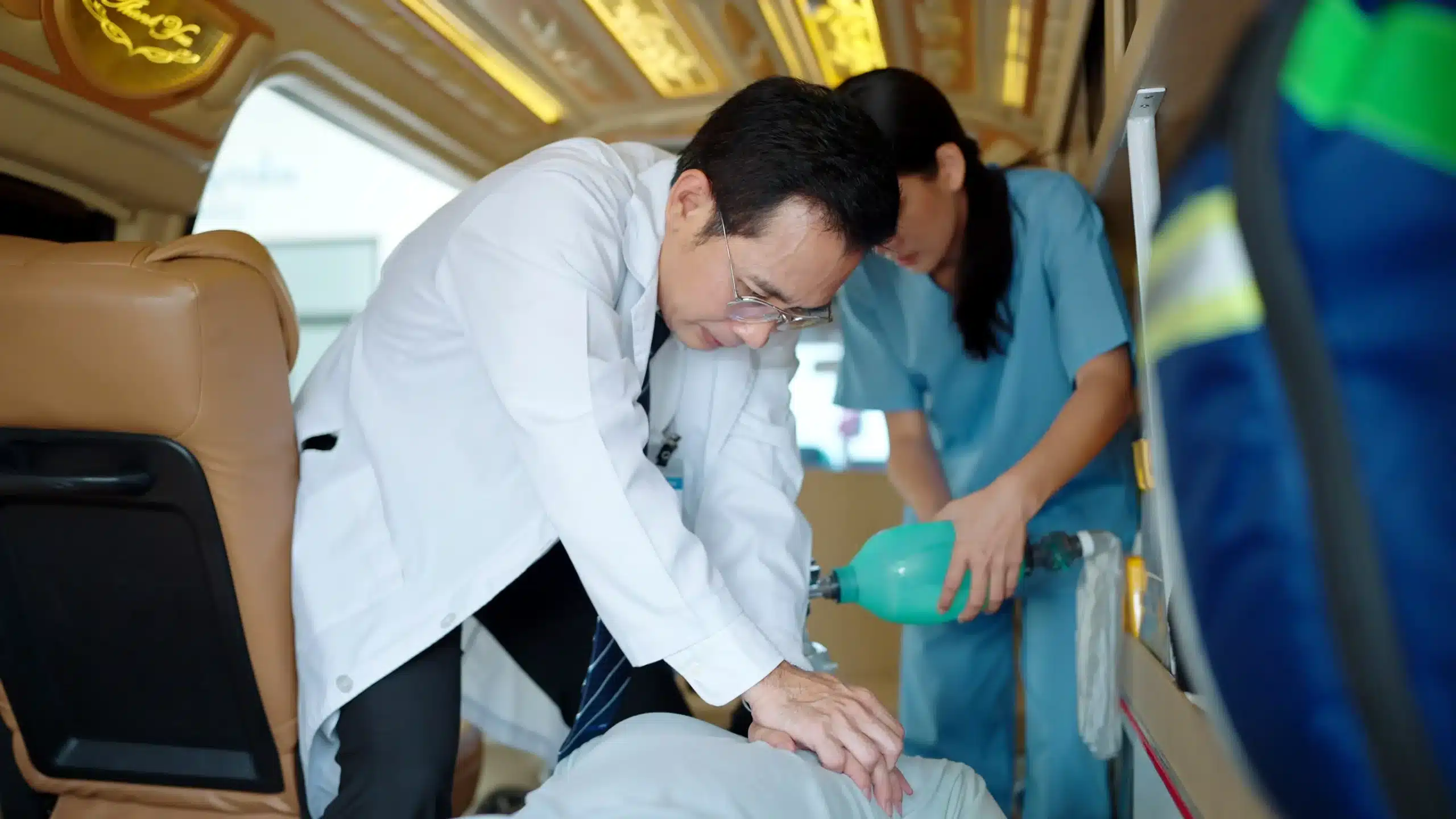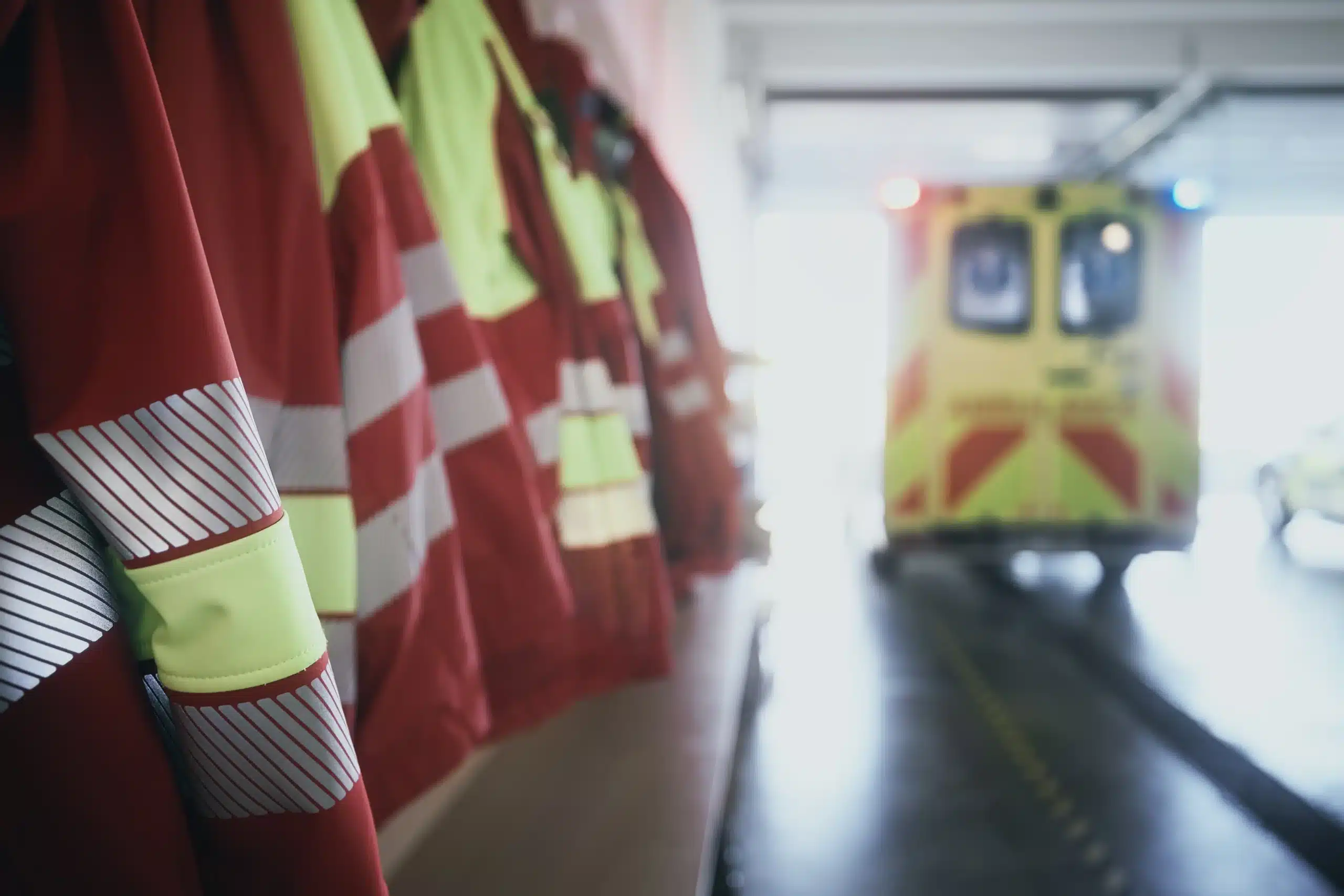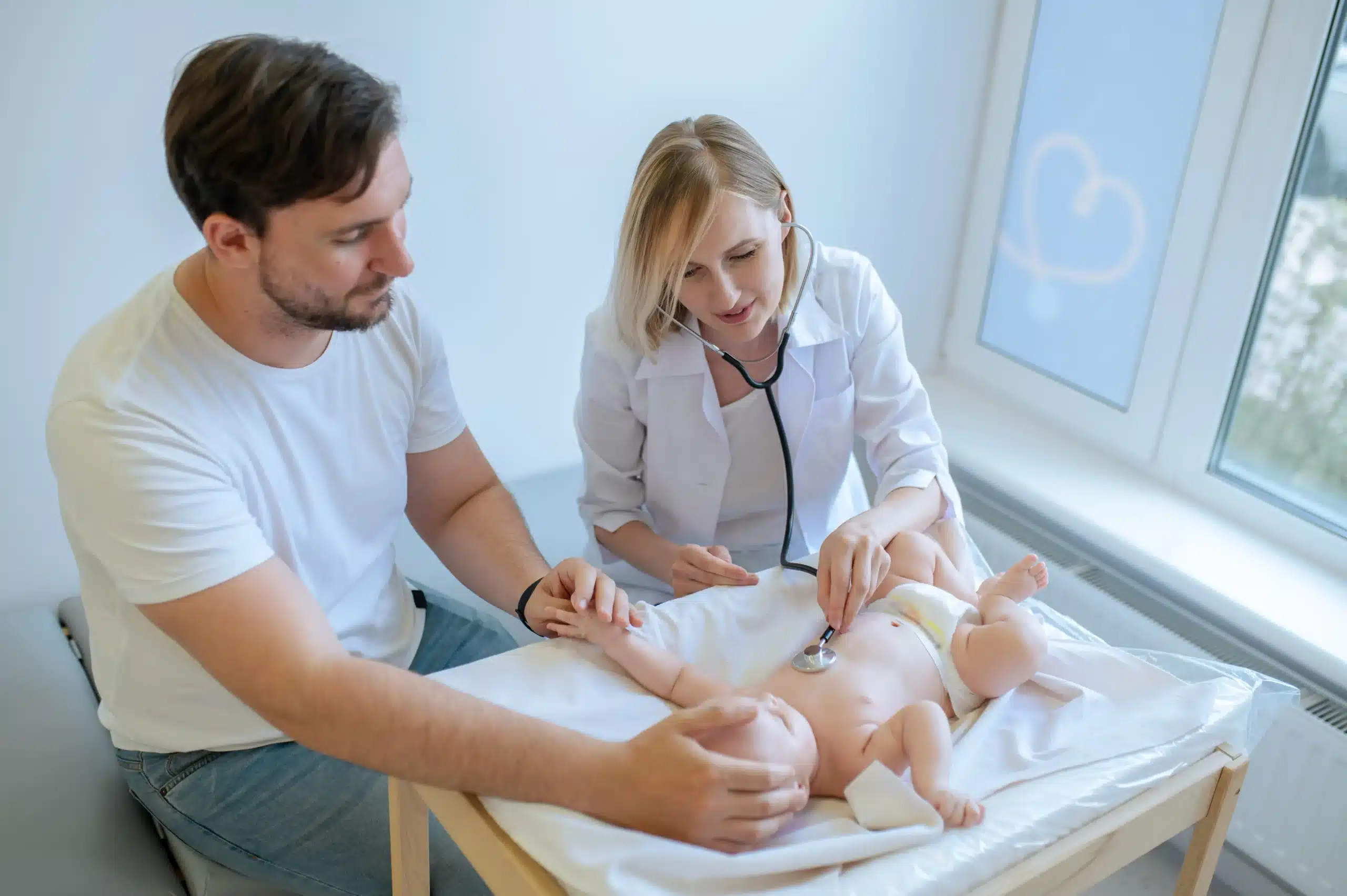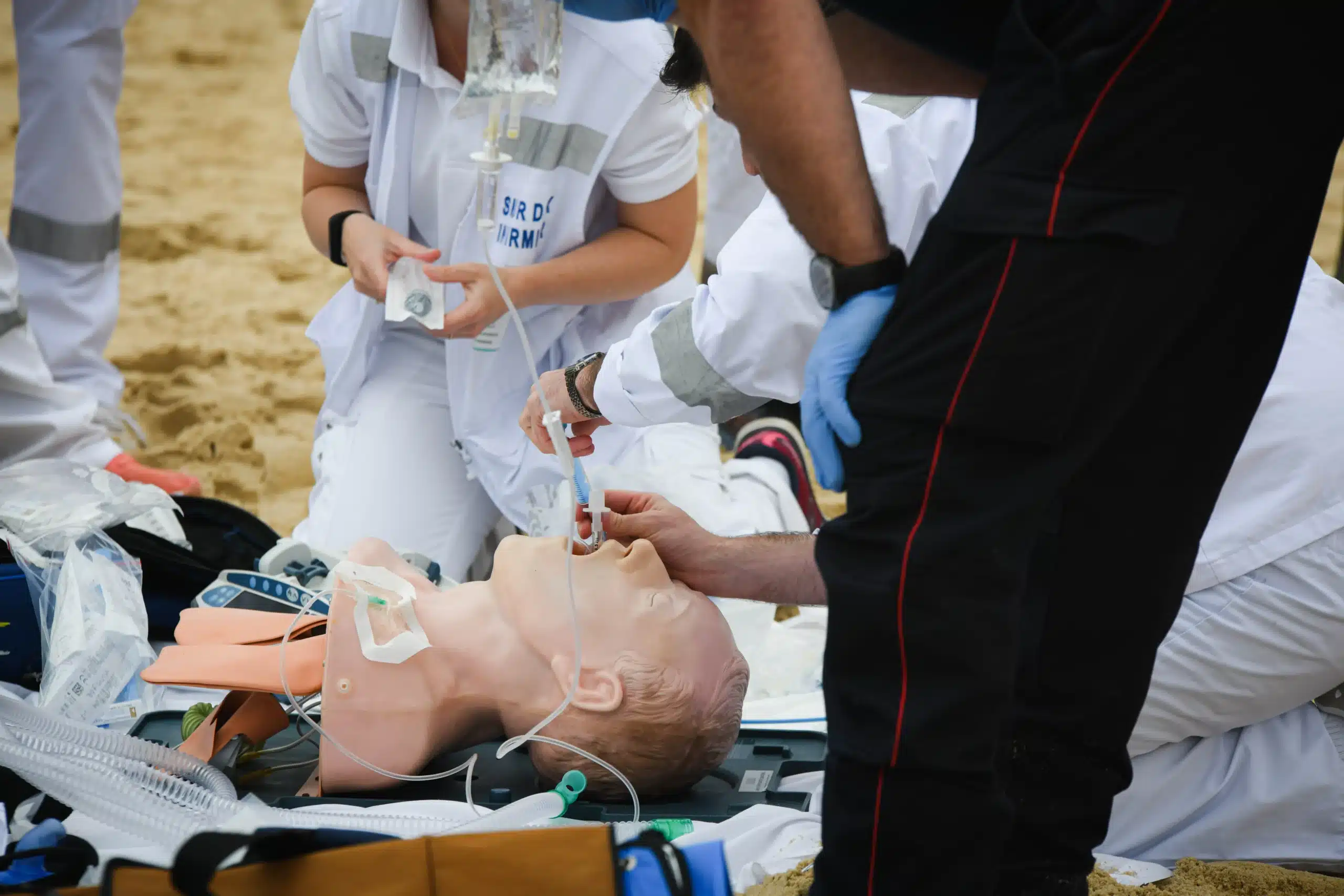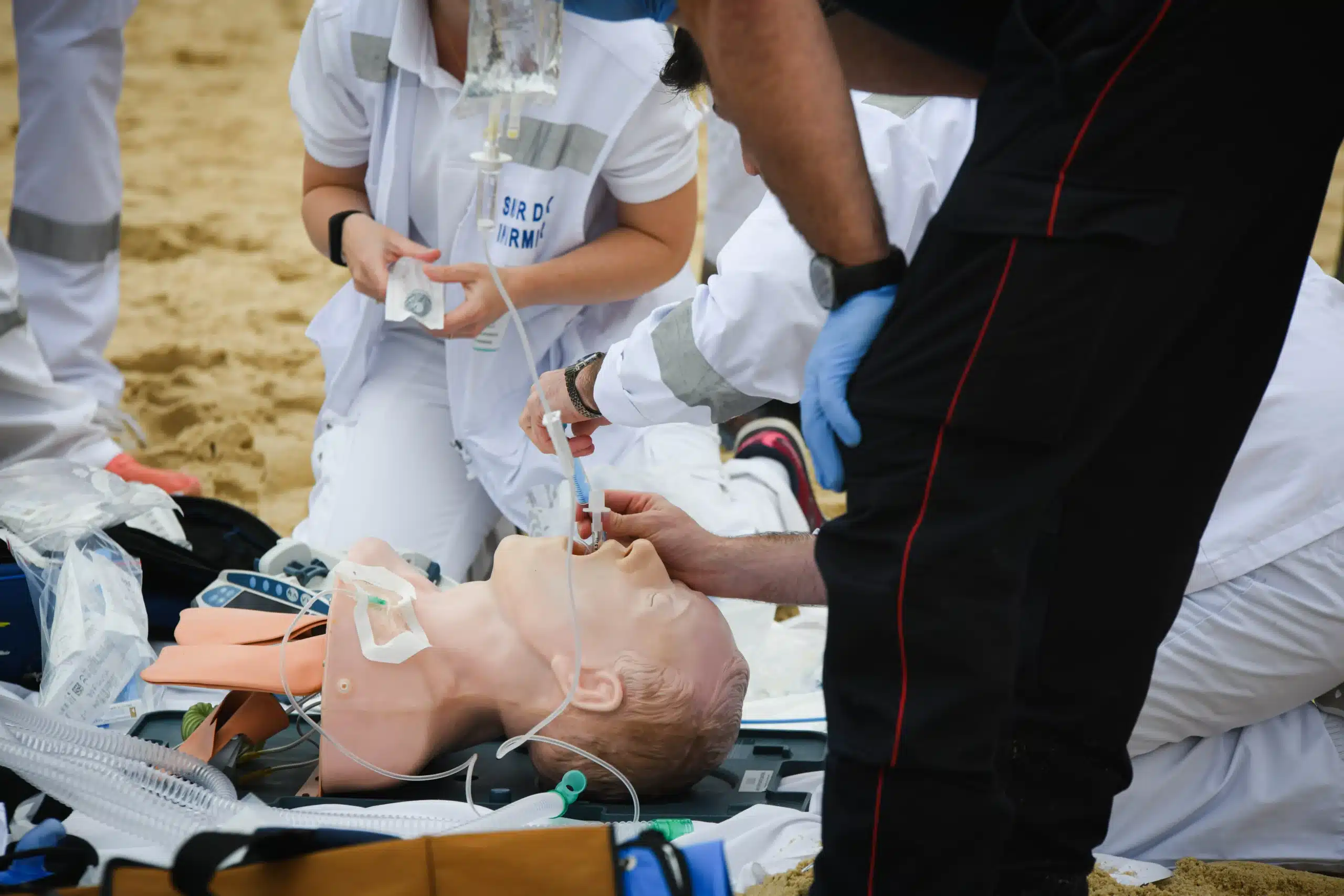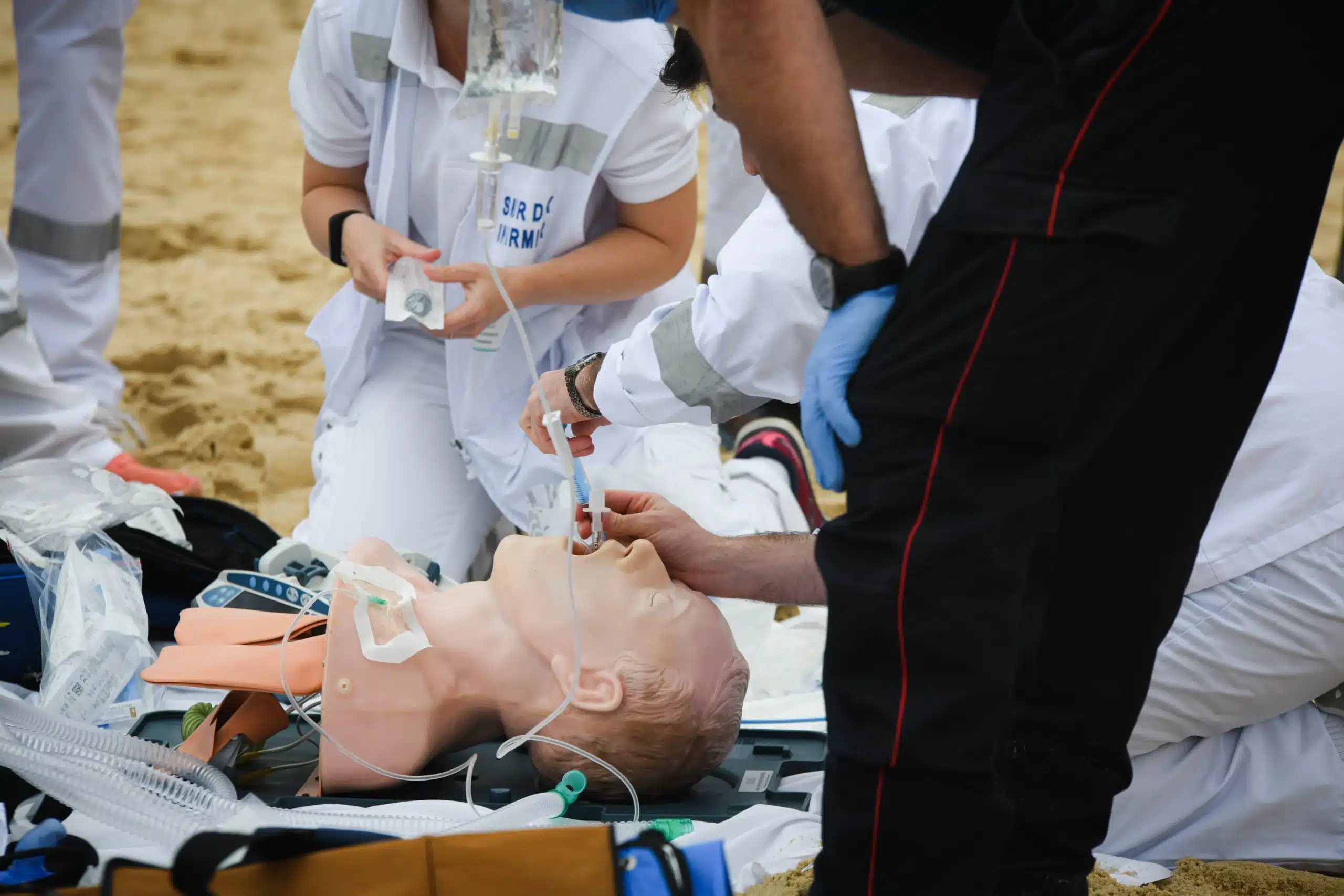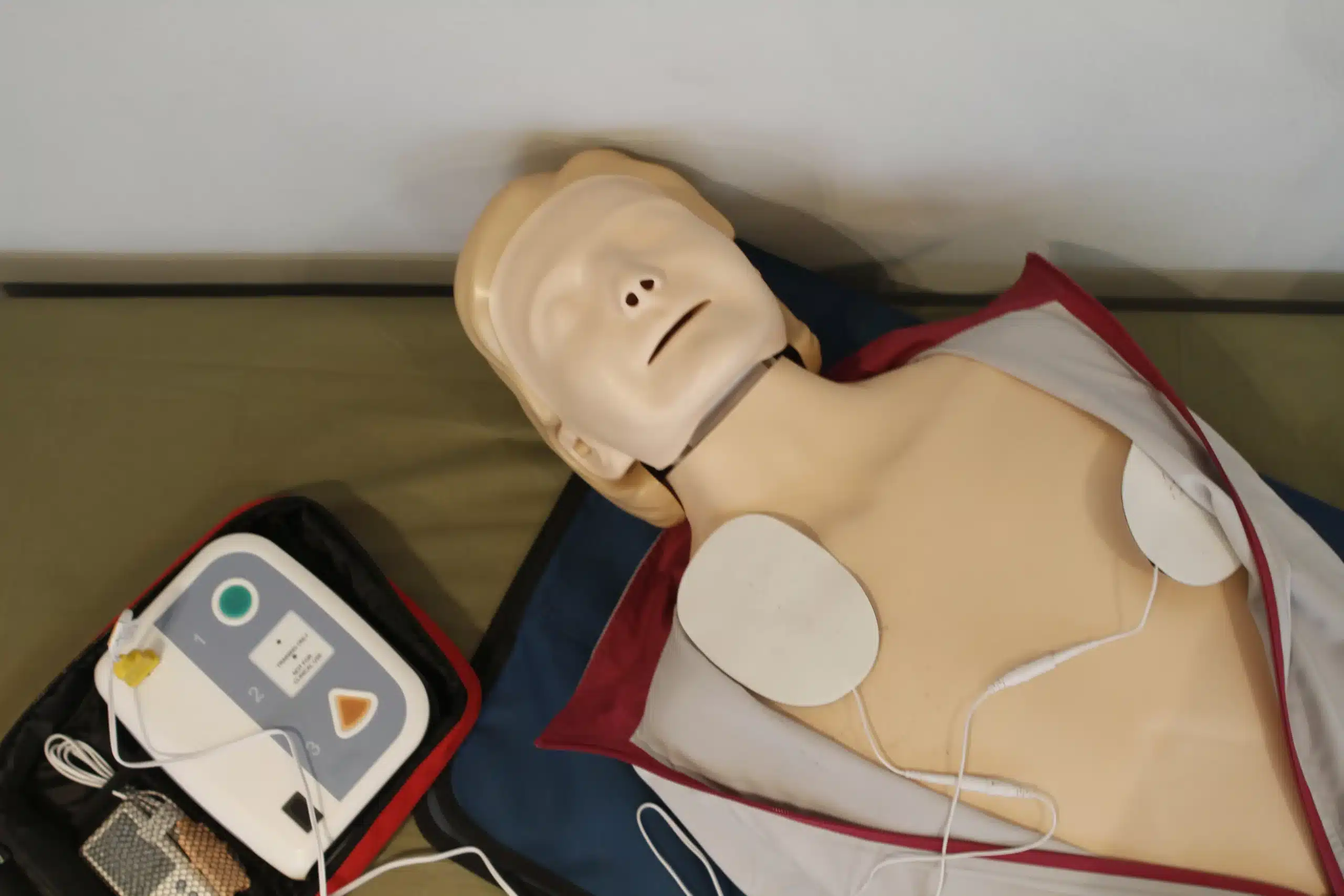Looking for BLS certification in San Ramon? You’re in the right place. This guide is your one-stop resource for everything BLS, from understanding why it’s important to finding the perfect course for your needs. We’ll explore the core components of BLS training, the different learning formats available, and what to look for in a reputable training provider in San Ramon. Whether you’re a healthcare professional, a first responder, or simply want to be prepared for emergencies, this article provides valuable insights and actionable steps to help you achieve your BLS certification goals. We’ll also discuss the value of ongoing training and how to stay current with the latest advancements in BLS. Let’s get started!
Key Takeaways
- BLS certification empowers you to act: It provides crucial life-saving skills applicable to various professions and personal situations. Explore different learning formats to find the best fit for your lifestyle.
- Select a BLS course strategically: Prioritize experienced instructors, manageable class sizes, and up-to-date training materials. Compare programs based on cost, schedule, and provider reputation to make an informed choice.
- Stay prepared with continued learning: Maintain your BLS skills and knowledge through recertification courses and access to updated resources. Regular practice ensures you’re always ready to respond effectively in emergencies.
What is BLS Certification?
What is BLS?
Basic Life Support (BLS) certification goes beyond the basics of CPR. It’s designed for healthcare providers, first responders, and anyone in a medical field. BLS covers core CPR skills and adds techniques for handling cardiac arrest, respiratory distress, and airway obstructions. Think of it as the next level of lifesaving knowledge, equipping you with more tools to handle serious medical emergencies. Pleasanton CPR Classes offers American Heart Association BLS training.
Why Healthcare Professionals Need BLS
Most medical facilities require their nurses and other healthcare professionals to hold a current BLS certification. It’s not just a box to check; it demonstrates a commitment to patient safety and staying up-to-date with the latest lifesaving procedures. Holding a valid BLS certification shows initiative and a dedication to providing high-quality care. For those working in healthcare, it’s often a mandatory requirement for employment. Learn more about the benefits of BLS certification for nurses.
BLS Benefits for Everyone
Even if you’re not a healthcare professional, BLS training offers valuable skills for anyone. Knowing how to use an automated external defibrillator (AED), manage airways, and assist someone who is choking can make a real difference in an emergency. BLS training empowers you to act quickly and confidently in critical situations, potentially saving a life. It’s a powerful skillset to have, regardless of your profession. Consider taking a CPR and First Aid class to learn these essential skills. Read more about common misconceptions about BLS.
Top BLS Certification Providers in San Ramon
Finding the right BLS certification course can feel overwhelming. To simplify your search, we’ve compiled a list of reputable providers in San Ramon. Remember to confirm course availability and details directly with each provider.
Safety Training Seminars (Pleasanton CPR Classes)
Safety Training Seminars, also known as Pleasanton CPR Classes, offers American Heart Association-certified BLS, ACLS, PALS, and CPR classes in San Ramon (conveniently located near Pleasanton and Walnut Creek). They’re committed to excellent customer service and offer a low price guarantee. Classes are available daily, and they can also conduct group training at your location. They also offer RQI courses for those who need it.
Heart Start CPR
Serving the San Francisco Bay Area since 2003, Heart Start CPR is an American Heart Association-certified training center. They train thousands of students each year and offer a wide selection of courses, including CPR, First Aid, BLS, ACLS, PALS, and Fire Training. Visit their website to explore their course catalog.
CPR Training Center
The CPR Training Center in San Ramon has been an American Heart Association-certified training center for 28 years. They offer various CPR and advanced life support courses, including ACLS, BLS, PALS, and NRP. Learn more about their San Ramon training center.
American Heart Association Certified Centers
The American Heart Association provides numerous resources, including BLS training for individuals and organizations, as well as BLS instructor training. Their courses are developed and reviewed by medical and scientific experts, ensuring they meet the highest standards.
Choose Your BLS Course Format
Finding the right BLS course format is key to successful learning. Whether you thrive in a traditional classroom, prefer online learning, or appreciate a mix of both, there’s a
In-Person Training
In-person BLS training offers a hands-on learning experience perfect for those who value direct interaction. Led by experienced instructors, often firefighters, paramedics, or EMTs, these courses provide personalized feedback and real-time guidance. Small class sizes, like those at Safety Training Seminars (Pleasanton CPR Classes), allow for individual attention and ample opportunity to practice essential skills. This format fosters a collaborative environment where you can ask questions, share experiences, and build confidence.
Blended Learning
Blended learning combines online coursework with in-person skills sessions. This hybrid approach offers the flexibility of online learning with the practical application of hands-on training. You’ll work through interactive modules and complete knowledge checks online at your own pace, then attend an in-person session to demonstrate your skills and receive feedback. This format is ideal for busy individuals who still value face-to-face instruction. Providers like Bay Area CPR offer this blended learning style.
Online Certification
For maximum flexibility, online BLS certification courses provide a convenient alternative. These courses deliver the same comprehensive curriculum as traditional classes, covering essential BLS skills and knowledge. Online certification allows you to learn at your own pace, anytime, anywhere. Reputable providers like ACLS.com offer accredited online BLS certification, ensuring you receive a recognized credential. This format is particularly beneficial for busy professionals, like nurses, needing to fit certification into their schedules.
Flexible Scheduling
Recognizing the diverse needs of individuals and organizations, many BLS training providers offer flexible scheduling. Whether you prefer weeknights, weekends, or daytime classes, you can find a course that fits your availability. Some providers, including Heart Start CPR, also offer on-site training for businesses, bringing the training directly to your workplace. This eliminates the need for employees to travel off-site, minimizing disruptions.
Get BLS Certified: Process and Content
Getting your BLS certification is a straightforward process. Here’s what you can expect:
Prerequisites and Materials
There are no prerequisites for taking a BLS course. All required materials, including your BLS Provider Manual, are typically provided as part of your course fee. Pleasanton CPR Classes, for example, ensures you have everything you need to succeed. We’ve been a trusted provider of CPR certification courses in the Tri-Valley area for years. We offer a low price guarantee on all our courses.
Core Curriculum
BLS certification courses cover essential life-saving techniques. You’ll learn how to use an automated external defibrillator (AED), perform CPR on adults, children, and infants, and provide relief for choking victims. The curriculum also emphasizes teamwork, communication, and high-quality CPR. Check out our BLS course page for more details.
Skills Assessment
Your BLS skills are evaluated through a hands-on assessment using a voice-activated mannequin (VAM). This simulates a real-life emergency and allows you to demonstrate your proficiency in the techniques you’ve learned. While a live instructor isn’t physically present during the VAM assessment, support is available by phone if needed.
Certification and Validity
Once you’ve successfully completed the course and skills assessment, you’ll receive your American Heart Association BLS Provider Course Completion Card. This certification is valid for two years. To maintain your skills and stay current with the latest guidelines, remember to renew your BLS certification before it expires. We offer convenient renewal courses to help you stay certified.
Compare Course Duration, Cost, and Value
When choosing a BLS certification course, comparing duration, cost, and overall value is essential. Understanding these factors helps you find a program that fits your schedule, budget, and learning preferences.
Course Lengths
BLS courses typically run about four to five hours. This timeframe allows adequate time to cover essential content, including CPR techniques, AED use, and effective team dynamics. While some providers may offer slightly shorter or longer courses, this general range ensures comprehensive instruction. For a good example of course length, see the American Red Cross BLS Training and Certification program.
Prices and Inclusions
Course fees vary depending on the training center and included materials. Some providers, like Pleasanton CPR Classes, offer a low price guarantee, ensuring competitive pricing. Check each provider’s website or class schedule for specific pricing details. Often, the advertised price includes study materials, certification fees, and sometimes even equipment like CPR mannequins for practice during the course.
Provider Value
Beyond the basics, consider the provider’s reputation and experience. Look for established training centers with certified instructors and positive student feedback. A provider’s history and the number of students they’ve trained can offer insights into their expertise. Pleasanton CPR Classes focuses on excellent customer service and offers courses in over 60 cities, demonstrating their commitment to accessibility and quality.
Discounts and Group Rates
If you’re training with a group, explore potential discounts. Many providers offer reduced rates for group bookings, making it a cost-effective option for workplaces or organizations. Pleasanton CPR Classes offers group discounts, so check their site for details. This can be a smart way to save money while ensuring everyone receives the same high-quality training.
Meet Your BLS Instructors
Choosing the right BLS course is essential, and a big part of that is knowing who will teach you. At Pleasanton CPR Classes, we prioritize experienced instructors and a comfortable learning environment. Let’s explore what makes our instructors stand out.
Experience and Certifications
You want instructors who know their stuff. Our instructors are certified American Heart Association healthcare providers with years of real-world experience. Like established providers such as Heart Start CPR, which has trained students in the Bay Area since 2003, we understand the importance of qualified instructors. We also recognize the value of local experience, like that of the CPR Training Center in San Ramon, which has served the community for nearly three decades. This commitment to expertise ensures you receive high-quality training that prepares you for real-life emergencies.
Ongoing Education
The medical field is constantly evolving, and BLS techniques and best practices change, too. Our instructors participate in continuous professional development to stay updated on the latest guidelines from the AHA. This dedication to ongoing education, similar to the approach at CPR Training Center, which emphasizes low-stress learning led by healthcare providers, ensures you learn the most current and effective methods. We also integrate technology, like online components and skills testing featured by Safety Training Seminars, to make learning more efficient.
Instructor-to-Student Ratios
We keep our class sizes small to maximize individual attention and hands-on learning. This approach allows for personalized feedback and ensures every student feels comfortable practicing their skills. Just like the in-person classes at Heart Start CPR, our courses provide ample opportunity for interaction and practice. We also understand that CPR training can be physically demanding, and we encourage students to consider their physical abilities and reschedule if needed. Your comfort and safety are our priorities.
Renew Your BLS Certification
Keeping your BLS certification current is essential for any healthcare professional or individual who wants to be prepared for emergencies. Knowing you have the most up-to-date skills can make all the difference. This section covers everything you need to know about renewing your BLS certification.
Renewal Requirements
BLS certification is typically valid for two years. This means you’ll need to recertify every two years to maintain your credentials and stay current with the latest guidelines and techniques. Don’t let your certification lapse—stay proactive and plan for your renewal in advance.
Recertification Options
Several convenient options are available for BLS recertification. You can take a renewal course that covers essential skills and knowledge, refreshing your training and extending your certification. These courses are designed to be efficient and effective, allowing you to quickly update your qualifications. Safety Training Seminars offers various courses and schedules.
Stay Up-to-Date
The world of healthcare is constantly evolving, and BLS techniques and best practices are updated periodically. Recertification ensures you’re always equipped with the most current knowledge, often emphasizing high-quality CPR and team dynamics, vital for effective emergency response. Staying informed can significantly impact patient outcomes. Check with your certifying organization or Safety Training Seminars for the most recent guidelines.
BLS Facts: Separating Myth from Reality
It’s easy to get confused by information floating around about BLS certification. Let’s clear up some common misconceptions and give you the straight facts.
BLS vs. CPR
While both Basic Life Support (BLS) and CPR aim to save lives, they differ in scope. CPR focuses on chest compressions and rescue breaths for anyone experiencing cardiac arrest. BLS builds upon these basics, adding techniques for healthcare providers, such as using a bag-valve mask, managing obstructed airways, and working effectively within a team during resuscitation. Think of BLS as CPR plus essential skills for professionals. The American Red Cross offers a helpful comparison of BLS and CPR. At Safety Training Seminars, our BLS course covers all the required elements to prepare you for real-world medical emergencies.
Online Certification Facts
One common myth is that online BLS certification isn’t as credible as in-person training. This isn’t true. Many reputable organizations, including the American Heart Association, offer blended learning that combines online coursework with in-person skills sessions. This flexible approach doesn’t compromise the quality of the training. American Health Training addresses common misconceptions about online BLS certification. If this flexible approach sounds right for you, explore our blended learning options.
Physical Demands of BLS
BLS training involves hands-on practice and can be physically demanding. You’ll perform chest compressions and other techniques that require some physical exertion. If you have any physical limitations, consider your abilities and discuss any concerns with your instructor beforehand. Bay Area CPR offers insights into the physical aspects of CPR training. At Pleasanton CPR Classes, we’re happy to work with you to ensure a comfortable and successful learning experience. We can discuss any accommodations or alternative arrangements you might need. Just reach out to us!
Choose the Right BLS Program in San Ramon
Key Factors
Finding the right BLS program in San Ramon means considering a few key factors. First, know that BLS (Basic Life Support) certification goes beyond standard CPR. It equips healthcare providers, first responders, and other professionals with the advanced skills to manage cardiac arrest, respiratory distress, and airway obstructions. Choosing a program that aligns with your career goals and provides comprehensive training that meets industry standards is crucial. Think about what you need from the course, and choose accordingly. For a breakdown of the differences between BLS and CPR certification, the Red Cross offers a helpful comparison.
Beyond the curriculum, consider the program’s schedule and location. Convenient locations and flexible scheduling can make fitting training into your busy life much easier. Also, look into the class size and instructor-to-student ratio. Smaller classes often provide more personalized instruction and feedback.
Compare Local Options
San Ramon has several reputable BLS training providers. Safety Training Seminars, also known as Pleasanton CPR Classes, offers American Heart Association-certified BLS courses, along with other certifications like ACLS, PALS, and CPR. They emphasize excellent customer service and a low price guarantee, which can be valuable factors in your decision. Another option is the CPR Training Center in San Ramon, an established American Heart Association-certified training center with a long history of providing CPR and advanced life support courses. Researching various local providers gives you a clearer picture of what each offers. You can also find information on BLS courses in San Ramon through resources like Bay Area CPR.
Make Informed Decisions
Before committing to a BLS program, gather all the necessary information. Contact training centers directly with questions about their programs, instructors, and certification process. Ask about the course format, whether it’s entirely in-person, blended learning, or includes online components. Understanding the physical demands of BLS training is also important. While CPR is a life-saving skill, the training can be physically demanding. Discuss any physical limitations with the training center to ensure you can fully participate. Bay Area CPR addresses some of these considerations on their site. Carefully weigh your options to find the right BLS program in San Ramon to meet your needs.
Access Post-Certification Support
Earning your BLS certification is a significant achievement, but it’s just the first step. Continued learning and access to resources are essential for maintaining your skills and confidence. Here’s what to look for in a quality BLS program:
Refresher Courses
Basic Life Support skills require regular practice to stay sharp. Look for providers, like Pleasanton CPR Classes, that offer recertification courses to update your skills and extend your certification. These courses help you maintain proficiency in life-saving techniques and ensure you’re current with the latest guidelines from organizations like the American Heart Association. Knowing how to perform high-quality CPR in various situations is a skill that benefits from consistent practice.
Updated Materials
The medical field is constantly evolving. Choose a BLS training provider committed to using current, evidence-based materials. The best programs, including those using the American Heart Association’s BLS Instructor-led course, emphasize not only individual techniques but also team dynamics and high-quality CPR. This focus on teamwork is crucial for effective emergency response in any setting. Access to updated materials ensures you’re always prepared to provide the best possible care.
Ongoing Support
Your learning shouldn’t end when you receive your certification card. Select a BLS provider that offers continued support. This might include access to online resources, practice materials, or instructor contact for questions after your course. Comprehensive programs often provide structured support, including handouts and detailed schedules, to guide you through the entire learning and certification process. This ongoing support builds confidence and helps you apply your BLS skills effectively.
Related Articles
- Basic Life Support (BLS) in Pleasanton: Your Complete Guide
- BLS Classes in Dublin: A Comprehensive Guide
- BLS Renewal in San Ramon: Your Guide to Certification – Pleasanton CPR Classes
- BLS Courses in San Ramon: A Complete Guide
- CPR Renewal in Pleasanton: Your Easy Guide – Pleasanton CPR Classes
Frequently Asked Questions
Is BLS certification the same as CPR certification?
No. CPR is a core component of BLS, but BLS goes further. It includes additional skills like using a bag-valve mask and managing airways, essential for healthcare providers and first responders. BLS certification is generally required for healthcare professionals, while CPR certification is often sufficient for other professions and individuals.
How long does BLS certification last, and how do I renew it?
BLS certification is typically valid for two years. You’ll need to take a recertification course before it expires to stay current with the latest guidelines and maintain your credentials. Many providers offer convenient renewal courses, often shorter than the initial certification course.
What if I have physical limitations? Can I still get BLS certified?
BLS training does involve physical activity, like performing chest compressions. If you have any physical limitations, talk to your chosen training provider. They can discuss potential accommodations or modifications to help you successfully complete the course.
Are online BLS certification courses accepted?
Yes, many reputable organizations offer blended learning options that combine online coursework with in-person skills sessions. This allows for flexibility without compromising the quality of the training. Make sure the online portion is accredited by a recognized organization like the American Heart Association.
How do I choose the right BLS training provider?
Consider factors like the provider’s reputation, instructor experience, course format (in-person, blended, or online), class size, location, schedule, and cost. Look for providers who offer ongoing support and resources beyond the initial certification course. Reading reviews and comparing options can help you make an informed decision.
